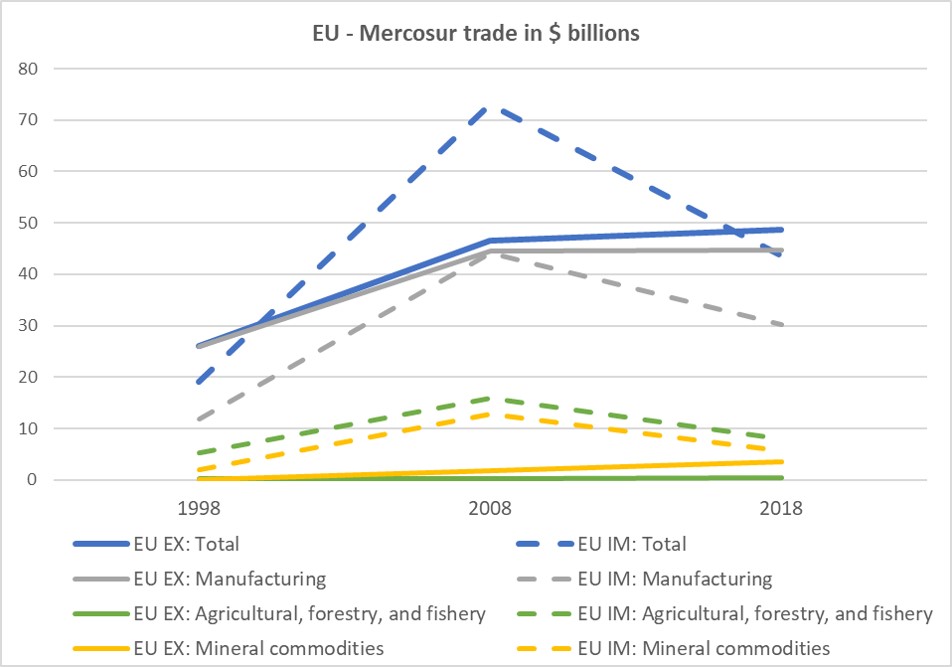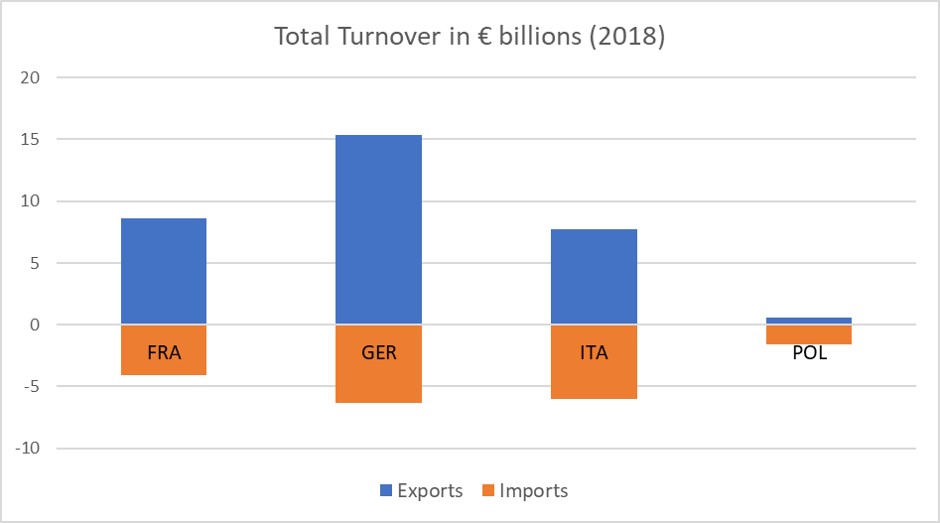EU Trade Agreement with Mercosur
Last year, the EU and the Mercosur members Argentina, Brazil, Paraguay and Uruguay concluded the 20-year negotiations on closer economic relations. The agreement has raised multiple social and ecological concerns by NGOs, civil society as well as several governments in Latin America and in Europe. Among others, it is argued that the agreement would incentivize further deforestation of the Amazon rainforest as well as the weakening of local production in the developing economies in the Southern Cone. Most recently, even the German chancellor Angela Merkel, who is usually a strong advocate for deepening international trade, has expressed “considerabel doubts” about the agreement.
Acknowledging the potential hazardous impacts on the environment and societies that would be caused by the agreement, I will take a step back and widen the scope. I question the economic rationale of the agreement and try to identify the main European beneficiaries in France, Germany, Italy and Poland.

Looking at the economic indicators, The Economist described the trade agreement as a landmark free trade deal that created a market made up of 780m people and saved EU exporters over €4bn in tariff payments. The Financial Times pointed out that for Mercosur the increased access for agricultural goods such as beef, poultry, sugar and ethanol was the biggest achievement. With respect to the EU, they emphasized that the overall export environment would improve significantly.
However, the ratification of the agreement is seen quite complicated because European farmers in countries such as France or Poland have raised concerns about losing market share to cheaper Mercosur products. On the other hand, the industrial and manufacturing sector in the Southern Cone worries about the market entrance of more competitive EU companies despite their timeframe to improve its productivity in the next years prior to the full liberalization. With respect to the long-term effects, scholars argue that the agreement would eventually increase trade interactions and facilitate market access. Consequently, the exporting Mercosur agri-businesses and European export-oriented industries of industrialized products would benefit the most.

The data analysis shows that the agreement offers economic opportunities for all four investigated countries. Germany’s machinery and electrical equipment sector may take advantage of the reduction of customs duties and further increase its exports including cars and special machinery. France and Italy may profit in the same or similar sectors but could also improve their performance in the agricultural sector. In addition, Poland may receive the opportunity to balance its trade deficit by improving its performance in the exports of agri-foods. On the other hand, the agriculture sector may also be threatened by more competitive Mercosur agricultural products.

It may be argued that these cases are in line with the general assessment that the EU-Mercosur Agreement tends to benefit strong economic actors like EU industrial sectors and Mercosur agri-food businesses which further increases trade asymmetries between but also within the EU and Mercosur. This economic argument, in addition to a variety of social and environmental concerns, might slow down the political ratification process in the participating countries which would also postpone the positive economic effects of the agreement significantly.
In my opinion, the economic opportunities benefitting mostly the powerful actors do not outweigh the costs of increasing economic asymmetries as well as the threat to societies and the environment. Modern trade agreements need to include broader economic opportunities and guarantee social and environmental rights. It is up to the EU to use its economic bargaining power to promote sustainable trade relations. It is not sufficient to have a European Green Deal without applying these principles to trade relations.
Thank you for investing your time in reading this post. If you have feedback, questions or concerns, feel free to reach out to me on twitter. For further information and the overview of all sources, check out my paper.
Attachments
Thank you for providing the cover photo @ Alan Santos/PR licensed under the terms of the cc-by-2.0.